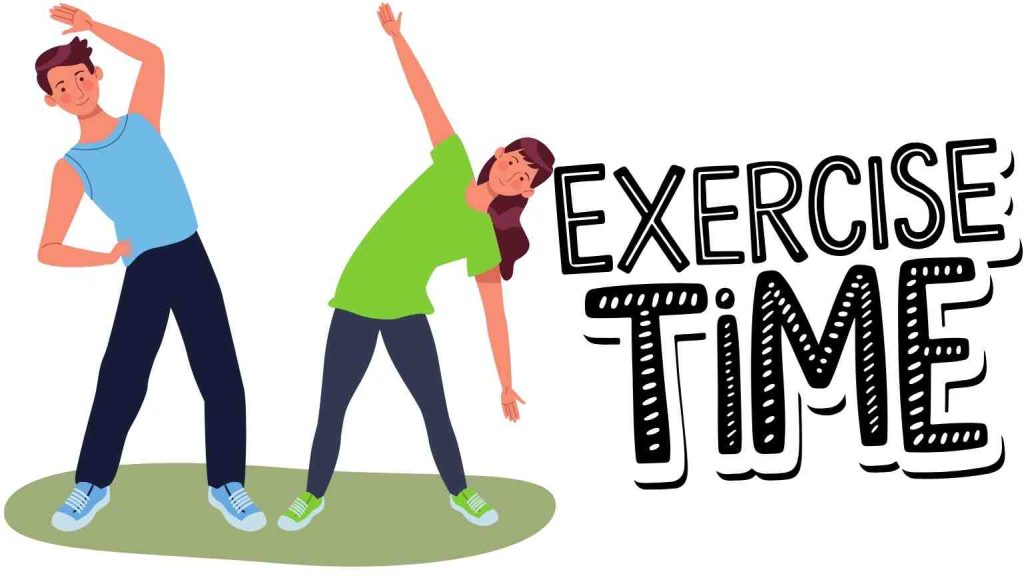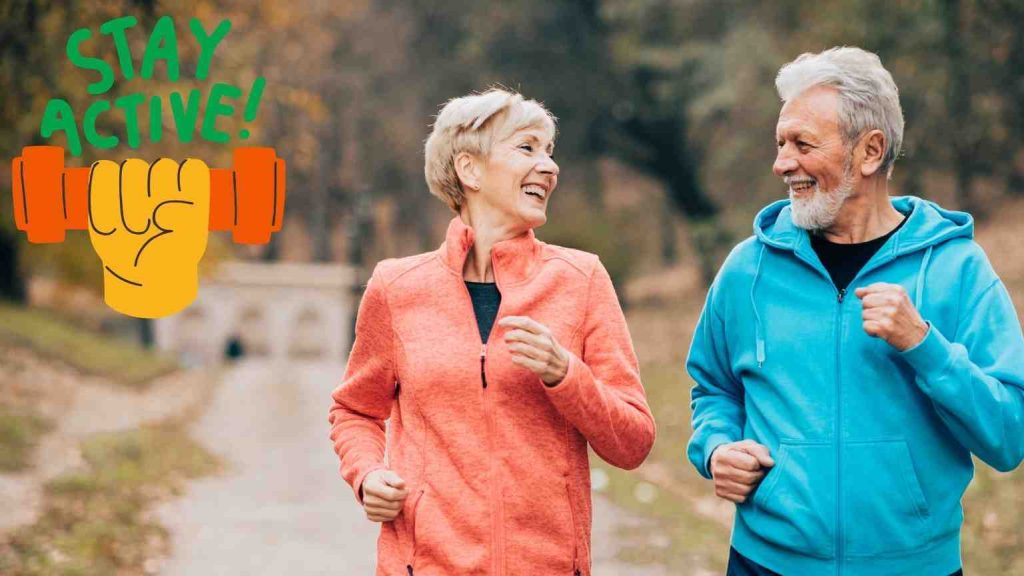
Losing weight at home has never been easier. Simple home workouts for beginners can be just as effective as gym routines if done correctly. Whether you’re a busy mom juggling kids, a student on a tight schedule, or just starting your fitness journey, you can transform your living room or bedroom into a workout space. With these easy weight loss exercises for beginners at home, you won’t need any fancy equipment or gym membership. Each move targets multiple muscle groups to burn fat and boost metabolism, making your workouts efficient and effective. Plus, exercising at home means you can work out any time – even in your pajamas! Get ready to sweat and feel great as you follow along.
Matcha Slim Weight Loss Drink: Natural Matcha Supplement for Effective Results
Home workouts offer many advantages, especially for beginners. You don’t need to plan around gym hours or commute—these exercises can fit your schedule. They save time and money, and you have the freedom to exercise in a comfortable space. Even without any special equipment, you can burn calories and tone muscles effectively. In fact, a simple routine of 20–30 minutes of home exercises can contribute significantly to weight loss over time.
- Convenience: Exercise whenever you have a few minutes – before work, after school, or any time of day.
- Cost-effective: No gym fees or expensive gear are required. Use your bodyweight to get in shape.
- Privacy and Comfort: You can work out in privacy, feeling less self-conscious than in a crowded gym. Wear whatever you like – even pajamas!
- Consistency: Having no barriers (like travel) makes it easier to stick to your plan. A regular daily routine leads to steady weight loss.
- Mental Health: Home workouts can boost your mood and energy. Physical activity releases endorphins, reducing stress and improving sleep.
- Flexibility: Customize your routine with your favorite music or videos. You can pause when needed and pick up where you left off.
- Family-Friendly: If you have kids, you can do short sessions together. This sets a healthy example and lets you watch them while exercising.
By mixing cardio moves and strength exercises at home, you’ll boost your metabolism and build lean muscle. This turns your body into a more efficient calorie-burning machine. Remember, consistency is key: a daily workout routine for weight loss, combined with balanced eating, will get you results.
Top 10 Easy Weight Loss Exercises (No Equipment Needed)
Below are 10 beginner-friendly exercises that you can do at home with zero equipment. These movements are easy to learn yet powerful enough to get your heart rate up and torch calories. Aim for 2–3 sets of each exercise, with 8–15 repetitions per set. Focus on proper form, and take short breaks (30–60 seconds) between sets. As you progress, challenge yourself by doing a few more reps or reducing rest time. Let’s start with the first exercise!
1. Bodyweight Squats
Squats are a simple home workout move that targets your quadriceps, hamstrings, and glutes. They also engage your core, helping stabilize your entire body. As a big muscle exercise, squats burn a significant amount of calories. To do a squat: – Stand with feet shoulder-width apart, toes pointing slightly outward.
– Keep your chest up and lower back neutral.
– Engage your core and push your hips back as you bend your knees.
– Lower your body until your thighs are parallel to the floor (or as low as feels comfortable).
– Press through your heels to stand back up to the starting position.
– Tip: Imagine sitting back into a chair. Keep your knees aligned with your toes and avoid letting them cave inward.
Bodyweight squats help improve posture and flexibility as well. If you want to increase the difficulty, pause for 1 second at the bottom of the squat, or try slow pulses (small up-and-down movements) before standing up. Start with 10–12 repetitions per set. As you get stronger, add more reps or try a squat hold (stay at the bottom for 15–30 seconds) to keep challenging your muscles.
2. Lunges
Lunges work your quads, hamstrings, and glutes, and they also engage your core for balance. This makes lunges one of the best exercises to lose weight at home while toning legs and hips. To do a basic forward lunge: – Stand tall with feet hip-width apart.
– Step forward with your right foot about 2–3 feet.
– Bend both knees to lower your body until the front thigh is parallel to the floor. Keep your front knee above your ankle (not jutting past your toes).
– Push through the front heel to return to standing.
– Repeat the movement with the left leg.
Do 8–10 lunges per leg for one set. Tips: Keep your upper body straight and shoulders relaxed. If forward lunges feel too intense, try reverse lunges (step backward instead of forward) to reduce knee strain. As a variation, you can add a slight jump between legs for a cardio boost once you’re more comfortable. Lunges improve balance and coordination, making them a great choice for any beginner friendly exercises at home routine.
3. Glute Bridges
Glute bridges strengthen your glutes (butt muscles), hamstrings, and lower back. They also engage your core, which helps improve posture. Strong glutes can boost overall strength and help avoid back pain. To perform a glute bridge: – Lie on your back with knees bent and feet flat on the floor, hip-width apart.
– Rest your arms at your sides.
– Press through your heels and squeeze your glutes to lift your hips toward the ceiling.
– Your body should form a straight line from shoulders to knees at the top.
– Pause for 1–2 seconds at the top, then slowly lower your hips back down.
Start with 12–15 reps per set. Tip: Focus on squeezing your glutes hard at the top and engaging your core. If you feel discomfort in your lower back, place your hands under your lower back for support or don’t lift your hips as high. To increase difficulty, try a single-leg bridge: lift one foot off the ground while performing the same motion (alternating legs). Glute bridges are low-impact and joint-friendly, making them ideal for beginners building a strong foundation.
4. Modified Push-Ups
Push-ups build upper body and core strength, making them a highly effective exercise. If traditional push-ups are too hard at first, try these easier versions: – Wall Push-Up: Stand facing a wall. Place your hands on the wall at shoulder height, slightly wider than shoulder-width. Walk your feet back until your body forms a diagonal line. Bend your elbows to bring your chest toward the wall, then push back. This reduces the resistance.
– Knee Push-Up: Begin in a plank position on your knees and hands. Keep a straight line from your head to your knees (no sagging or arching). Lower your chest toward the floor by bending elbows, then push back up to start.
Both variations work your chest, shoulders, and triceps. Start with 8–12 reps per set. Tip: Keep your core engaged and hips level throughout the movement. As you gain strength, try doing push-ups on a sturdy chair or bench (hands elevated) as a middle step before attempting full push-ups. Including push-ups in your routine improves upper-body strength and helps burn calories throughout the day.
5. Plank
The plank is an isometric core exercise that strengthens your abs, back, shoulders, and glutes. A strong core supports all movements and can improve posture. To do a basic plank: – Start face down with forearms on the floor and elbows under shoulders.
– Extend your legs behind you, balancing on the balls of your feet.
– Keep your body in a straight line from head to heels (avoid sagging hips or raised butt).
– Hold the position for 20–30 seconds to start, working up to 1 minute or longer as you build strength.
– Breathing: Remember to breathe steadily throughout.
If a full plank is too challenging, drop to your knees for a knee plank or place your forearms on a raised surface like a low table. Variation: Side planks target the obliques. Lie on one side, prop on one forearm, lift hips, and hold. Incorporate planks into your workout for a power-packed core move that also gets your heart rate up. Aim for 3–4 plank holds (total 60–90 seconds) each session to see benefits in your core stability.
6. Jumping Jacks
Jumping jacks are a classic cardio exercise that gets your heart rate up while involving your whole body. They’re great for a quick fat-burning boost and warm-up before strength moves. To do jumping jacks: – Stand with feet together and arms at your sides.
– Jump both feet out to the sides while simultaneously raising your arms overhead.
– Jump again to return feet together and arms back down.
– Repeat this motion continuously for 30–60 seconds.
Jumping jacks elevate the heart rate, improving cardiovascular fitness and calorie burn. Tip: Keep a soft bend in your knees to protect your joints from impact. If full jumping jacks are too intense or if you want a lower-impact version, try step jacks: instead of jumping, step one foot out at a time and alternately tap out to the side. Adding jumping jacks into your routine can make any home workout feel like a more intense fat-burning session.
7. High Knees (Marching or Jogging in Place)
High knees are a simple cardio exercise that targets the core, quads, hamstrings, and calves. You can do them marching or jogging in place to suit your fitness level. To perform high knees: – Stand tall and lift your right knee toward your chest.
– As you lower the right leg, simultaneously lift the left knee.
– Continue alternating knees at a brisk pace.
– Pump your arms as if running.
Try to lift knees to waist height (or as high as comfortable) and keep a steady rhythm. Beginner Tip: Start by marching in place with high knee raises before progressing to a light jog motion. This is one of the quick exercises to lose belly fat at home since it quickly raises your heart rate and engages your abs. Aim for 30–60 seconds of high knees per set. Remember to land softly on the balls of your feet to reduce impact.
8. Mountain Climbers
Mountain climbers are a dynamic full-body exercise that combines cardio and core training. They work your abs, shoulders, and legs, making them excellent for weight loss. To do mountain climbers: – Start in a high plank position (hands under shoulders, body straight).
– Keeping your hips level, pull your right knee toward your chest.
– Quickly switch legs, bringing your left knee in as your right leg goes back.
– Continue alternating knees in a running motion while holding the plank.
Perform mountain climbers for 20–30 seconds per set. Modification: If the full plank is hard, do them with your hands on an elevated surface (like a chair) or a high plank on knees. Keep your core tight and avoid letting your hips sag. Mountain climbers raise your heart rate and burn lots of calories in a short time. They’re a staple in any at home workout routine for a fat-burning challenge.
9. Bicycle Crunches
Bicycle crunches are an effective abdominal exercise that targets the rectus abdominis and obliques. Strong abs improve posture and core stability, supporting overall weight loss efforts. To do bicycle crunches: – Lie flat on your back with your hands behind your head, elbows wide.
– Lift your legs off the floor, knees bent at 90 degrees.
– Straighten your right leg out as you twist your torso, bringing your right elbow toward your left knee.
– Switch sides by straightening your left leg and bringing your left elbow to your right knee, simulating a bicycle pedaling motion.
– Continue alternating sides in a smooth, controlled manner.
Aim for 10–15 repetitions per side. Tip: Keep your lower back pressed into the mat to protect your spine. If this is too challenging, try normal crunches: lie on your back with knees bent, and lift just your shoulders off the floor. Adding bicycle crunches to your routine will strengthen your core and complement those calorie-burning moves above, helping to tone your midsection over time.
10. Glute Bridge March (Advanced Glute Bridge)
For a final challenge, try a glute bridge march. This move combines a glute bridge with alternating leg lifts to increase core and hip activation. It burns more calories than a regular bridge. To do it: – Lie on your back with knees bent and feet flat, hip-width apart.
– Lift your hips into a bridge position (just like the regular glute bridge).
– While keeping hips lifted, lift your right foot a few inches off the floor, bringing your knee toward your chest.
– Lower the right foot and lift the left foot in the same way, simulating a marching motion.
– Keep your hips as still as possible throughout (no dropping).
Perform 10 marches per leg. Tip: Squeeze your glutes and hold your hips high. If your hips drop too much when marching, stick to holding a regular bridge or pause longer with hips raised between lifts. This advanced move will torch calories and strengthen hips, glutes, and core even more.
Creating Your Daily Workout Routine for Weight Loss

Building a consistent daily workout routine is key to successful weight loss. Here’s how to structure a week: – Schedule workouts: Pick specific days and times for exercise, just like an appointment. Aim for at least 4–5 days a week.
– Balance exercises: Mix cardio moves (jumping jacks, high knees, mountain climbers) with strength moves (squats, lunges, planks) in each session. This combination burns fat while building muscle.
– Circuit training: For efficiency, create a circuit by stringing 4–5 exercises together with minimal rest. Example circuit: 10 squats, 10 push-ups (or knee push-ups), 20 jumping jacks, 30-second plank. Rest 1 minute and repeat 2–3 times.
– Alternate focus: If exercising 4–5 days a week, alternate body parts. For example, Day 1: legs & glutes (squats, lunges), Day 2: upper body & core (push-ups, plank, bicycle crunches), Day 3: cardio & full body (jumping jacks, high knees, mountain climbers).
– Warm-up and cool-down: Spend 3–5 minutes warming up (march in place, arm circles, gentle lunges) before each workout. End with stretching (hamstrings, quads, shoulders) to reduce soreness.
– Progression: Gradually increase intensity. Add more reps, shorten rest, or add a jump squat to your routine as you improve.
Example Weekly Plan:
1. Day 1 – Full Body: 2 circuits of (squats, modified push-ups, glute bridges, jumping jacks, plank).
2. Day 2 – Active Rest: Light activity like walking or yoga.
3. Day 3 – Lower Body: Lunges, wall squats, glute bridges, calf raises.
4. Day 4 – Upper Body & Core: Knee push-ups, plank, bicycle crunches, superman back extensions.
5. Day 5 – Cardio Blast: Jumping jacks, high knees, mountain climbers, fast feet.
6. Day 6 – Rest or Gentle Stretching
7. Day 7 – Repeat or Enjoy a Fun Activity (dancing, hiking, etc).
Stick to your plan as closely as possible. Even a short daily workout can lead to weight loss when done consistently.
Low-Impact Weight Loss Workouts
If you have joint pain, are pregnant, or just prefer gentler movement, low-impact workouts still help you lose weight. Low impact weight loss workouts minimize stress on the body. Here are some ideas: – March in place: Lift knees slowly, pumping arms. This is a good warm-up or cardio alternative.
– Step-touch: Step one foot to the side and tap the other foot, mimicking jumping jacks without the jump.
– Wall sit: Slide down a wall into a seated position (thighs parallel). Hold for 15–30 seconds and stand. This builds leg strength without pressure on the knees.
– Chair exercises: Use a sturdy chair to perform seated leg lifts or sit-to-stands. From seated, stand up without using your hands, then sit back down carefully.
– Calf raises: Stand and lift your heels up and down. This works lower legs and improves balance.
– Arm circles: Extend arms sideways and make small circles to warm up shoulders.
– Yoga flow: Gentle yoga poses like cat-cow, child’s pose, and downward dog stretch the body. A short yoga routine raises heart rate without impact.
These low-impact moves keep you active without heavy pounding. You can still combine them into a circuit (for example: 1 minute march + 10 wall-sits + 30s calf raises, then repeat). Over time, your stamina will improve. Remember, consistent exercise is what leads to weight loss, no matter the impact level.
Quick Exercises to Lose Belly Fat at Home
Focusing on core and cardio exercises can help reduce belly fat, but remember: spot reduction is a myth. To slim down your waistline, combine these moves with the full-body exercises above and a healthy diet. Here are some effective exercises to include:
- Planks: Hold a plank (front or side) for 20–60 seconds. Planks tighten the entire core.
- High Knees: 30–60 seconds of high knees activates abs and burns calories.
- Bicycle Crunches: Do 10–15 reps per side to target obliques and upper abs.
- Leg Raises: Lie on your back and lift your straight legs up and down slowly (10–12 reps). This engages lower abs.
- Mountain Climbers: 20–30 seconds of mountain climbers both work your abs and provide cardio.
- Russian Twists: (Optional) Sit with feet lifted slightly, twist torso side to side touching the floor beside you.
Perform a mini core circuit (e.g. plank + bicycle crunches + leg raises) at the end of your workout or as a daily quick session. Keep your core engaged and breathe steadily. Pair these exercises with cardio days and a calorie deficit, and you’ll start seeing your belly area shrink over time.
Additional Tips for Weight Loss Success
To maximize your results, remember that exercise and diet go hand in hand. Here are some extra tips: – Eat a Balanced Diet: Fuel your body with vegetables, fruits, lean proteins, and whole grains. Reducing processed foods and sugar will speed up fat loss.
– Stay Hydrated: Drinking water helps control hunger and supports metabolism. Aim for 6–8 glasses daily.
– Control Portions: Pay attention to portion sizes. Try filling half your plate with veggies at meals.
– Get Adequate Sleep: Aim for 7–9 hours per night. Poor sleep can make weight loss harder by affecting hunger hormones.
– Warm-Up and Cool-Down: Always start workouts with a light warm-up (like marching in place) and end with stretching to prevent injury.
– Track Your Progress: Keep a workout log or use a fitness app. Celebrate milestones like increasing reps or losing a few pounds.
– Listen to Your Body: It’s normal to feel muscle soreness, but stop if you experience sharp pain. Take rest days to let muscles recover.
– Stay Motivated: Find activities you enjoy. Add upbeat music or watch a show while working out. Share your journey with a friend or online community.
– Mix It Up: Don’t let workouts become boring. Try different exercises or swap order. This keeps your body challenged.
– Positive Mindset: Focus on how exercise makes you feel rather than just the scale number. Consistency and patience will pay off.
By combining these tips with the simple home workouts for beginners above, you’ll create a sustainable lifestyle change. Every healthy meal and every minute of activity adds up. Stay consistent, and you’ll see results over time.
FAQs About Home Weight Loss Exercises
Q: Can I lose weight at home without any equipment?
A: Yes! Weight loss ultimately comes from burning more calories than you consume. These bodyweight exercises help create that calorie deficit. Even without equipment, activities like squats, lunges, and cardio moves can burn significant calories when done consistently. Combine them with a balanced diet, and you’ll see weight loss at home over time.
Q: Which exercise is best to lose weight at home?
A: There isn’t one single “best” exercise. A combination of cardio and strength exercises is ideal. Cardio moves (jumping jacks, high knees, mountain climbers) burn calories quickly, while strength moves (squats, push-ups, lunges) build muscle, which raises your metabolism. Including both types in your routine is the best exercise to lose weight at home because it maximizes fat burn and tones your body.
Q: How many times a week should beginners work out?
A: Aim for at least 3–5 days of exercise per week. Starting with 2–3 days is fine if you’re completely new, but try to work up to more frequent sessions for better results. Even 15–20 minutes per day adds up. Just make sure to include rest or active rest days (light walking, stretching) so your body can recover.
Q: What if I have joint pain or health issues?
A: If you have joint pain, you can choose the low-impact options mentioned above (marching, wall squats, glute bridges). Always listen to your body. Use modifications like knee push-ups instead of full push-ups, or shorter workout durations at first. If you have a chronic health condition, consult a doctor before starting. These exercises are generally safe, but it’s important to tailor them to your comfort level.
Q: Do I need to follow a special diet along with these exercises?
A: Exercise helps burn calories, but diet plays a crucial role in weight loss. Try to eat whole foods and manage portion sizes. Avoiding sugary drinks and snacks can make a big difference. You don’t need a complicated plan—simply aim for a calorie deficit (eating fewer calories than you burn). Think of exercise and healthy eating as partners in your weight loss journey.
Q: How long until I see results?
A: Results vary by person. Many beginners notice increased energy and strength within a few weeks. Visible changes in weight or body shape can take 4–8 weeks of consistent exercise and good nutrition. Patience is key—focus on being consistent rather than instant results. Remember, small daily workouts accumulate into real progress over time.
Q: Are warm-ups and cool-downs necessary?
A: Yes. Warm-ups (like marching in place or arm circles) prepare your body for exercise and reduce injury risk. Cooling down with stretches after your workout helps ease muscle soreness and improve flexibility. Spending just 3–5 minutes on each can make your routine safer and more effective.
Conclusion
Starting a weight-loss routine at home is simple and accessible. These easy weight loss exercises for beginners at home show that you can burn fat and get fit without a gym or expensive equipment. By doing these bodyweight workouts regularly—whether it’s a short daily routine or a few focused sessions each week—you’ll improve strength, boost your metabolism, and gradually shed pounds.
Remember to pair your workouts with healthy eating, stay consistent, and be patient. Weight loss takes time, but every rep and every minute of activity counts. You have all the tools you need: a little space, a positive mindset, and motivation to stick with your plan. Keep moving forward and trust the process — your future self will thank you for starting today!
If you found this guide helpful, share it with a friend or family member. Leave a comment below to tell us which exercise you’re most excited to try or any questions you have. We’re rooting for your success — now go crush your workout!






